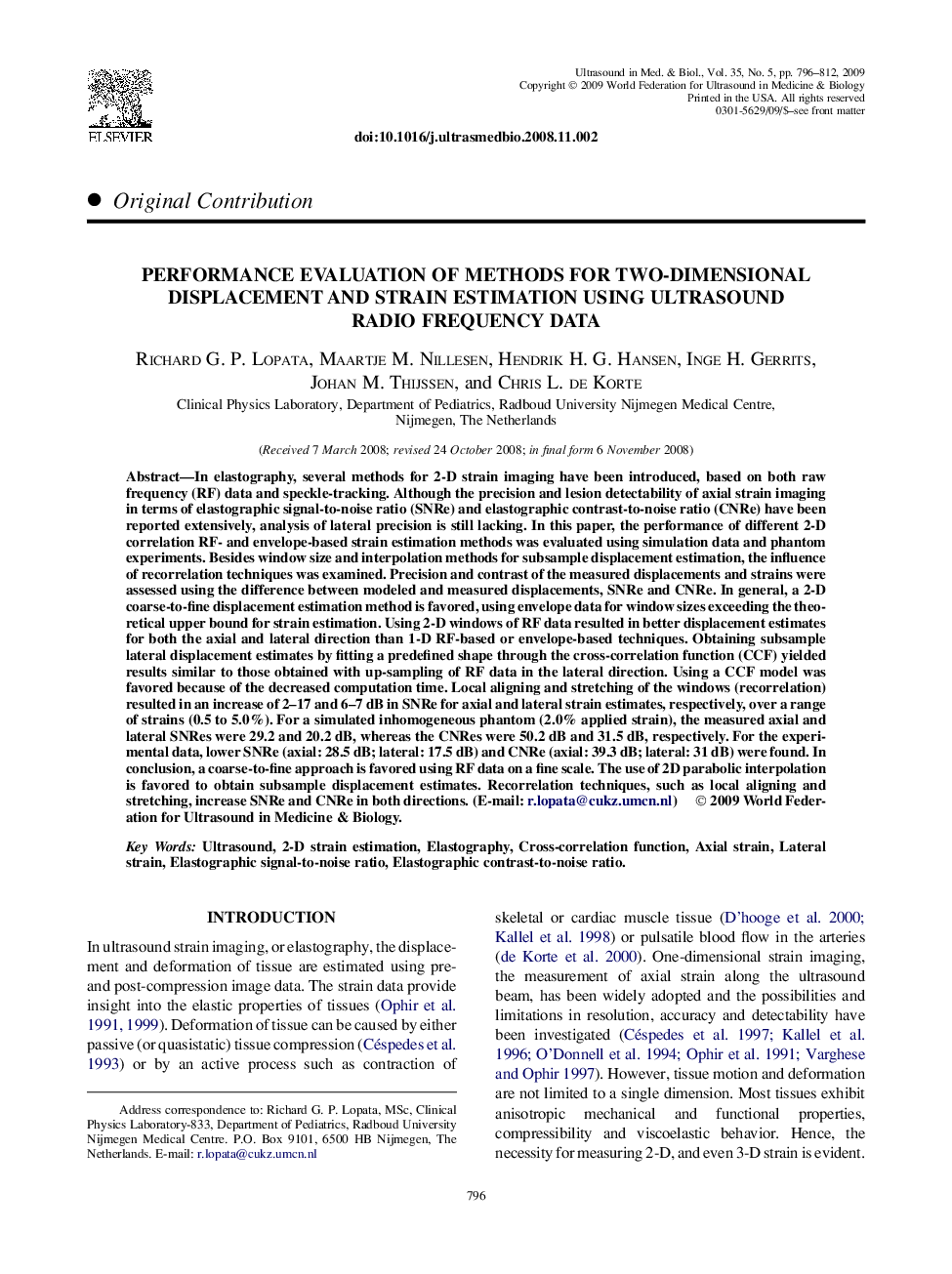| کد مقاله | کد نشریه | سال انتشار | مقاله انگلیسی | نسخه تمام متن |
|---|---|---|---|---|
| 1762314 | 1019685 | 2009 | 17 صفحه PDF | دانلود رایگان |
عنوان انگلیسی مقاله ISI
Performance Evaluation of Methods for Two-Dimensional Displacement and Strain Estimation Using Ultrasound Radio Frequency Data
دانلود مقاله + سفارش ترجمه
دانلود مقاله ISI انگلیسی
رایگان برای ایرانیان
کلمات کلیدی
موضوعات مرتبط
مهندسی و علوم پایه
فیزیک و نجوم
آکوستیک و فرا صوت
پیش نمایش صفحه اول مقاله

چکیده انگلیسی
In elastography, several methods for 2-D strain imaging have been introduced, based on both raw frequency (RF) data and speckle-tracking. Although the precision and lesion detectability of axial strain imaging in terms of elastographic signal-to-noise ratio (SNRe) and elastographic contrast-to-noise ratio (CNRe) have been reported extensively, analysis of lateral precision is still lacking. In this paper, the performance of different 2-D correlation RF- and envelope-based strain estimation methods was evaluated using simulation data and phantom experiments. Besides window size and interpolation methods for subsample displacement estimation, the influence of recorrelation techniques was examined. Precision and contrast of the measured displacements and strains were assessed using the difference between modeled and measured displacements, SNRe and CNRe. In general, a 2-D coarse-to-fine displacement estimation method is favored, using envelope data for window sizes exceeding the theoretical upper bound for strain estimation. Using 2-D windows of RF data resulted in better displacement estimates for both the axial and lateral direction than 1-D RF-based or envelope-based techniques. Obtaining subsample lateral displacement estimates by fitting a predefined shape through the cross-correlation function (CCF) yielded results similar to those obtained with up-sampling of RF data in the lateral direction. Using a CCF model was favored because of the decreased computation time. Local aligning and stretching of the windows (recorrelation) resulted in an increase of 2-17 and 6-7 dB in SNRe for axial and lateral strain estimates, respectively, over a range of strains (0.5 to 5.0%). For a simulated inhomogeneous phantom (2.0% applied strain), the measured axial and lateral SNRes were 29.2 and 20.2 dB, whereas the CNRes were 50.2 dB and 31.5 dB, respectively. For the experimental data, lower SNRe (axial: 28.5 dB; lateral: 17.5 dB) and CNRe (axial: 39.3 dB; lateral: 31 dB) were found. In conclusion, a coarse-to-fine approach is favored using RF data on a fine scale. The use of 2D parabolic interpolation is favored to obtain subsample displacement estimates. Recorrelation techniques, such as local aligning and stretching, increase SNRe and CNRe in both directions. (E-mail: r.lopata@cukz.umcn.nl)
ناشر
Database: Elsevier - ScienceDirect (ساینس دایرکت)
Journal: Ultrasound in Medicine & Biology - Volume 35, Issue 5, May 2009, Pages 796-812
Journal: Ultrasound in Medicine & Biology - Volume 35, Issue 5, May 2009, Pages 796-812
نویسندگان
Richard G.P. Lopata, Maartje M. Nillesen, Hendrik H.G. Hansen, Inge H. Gerrits, Johan M. Thijssen, Chris L. de Korte,